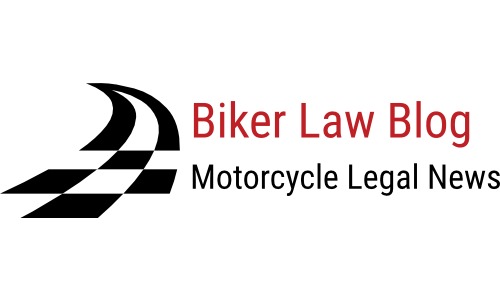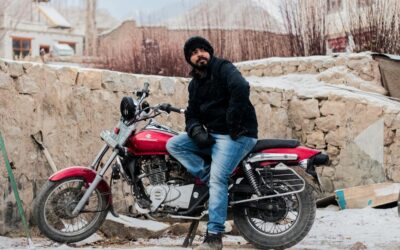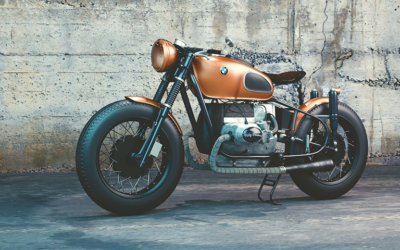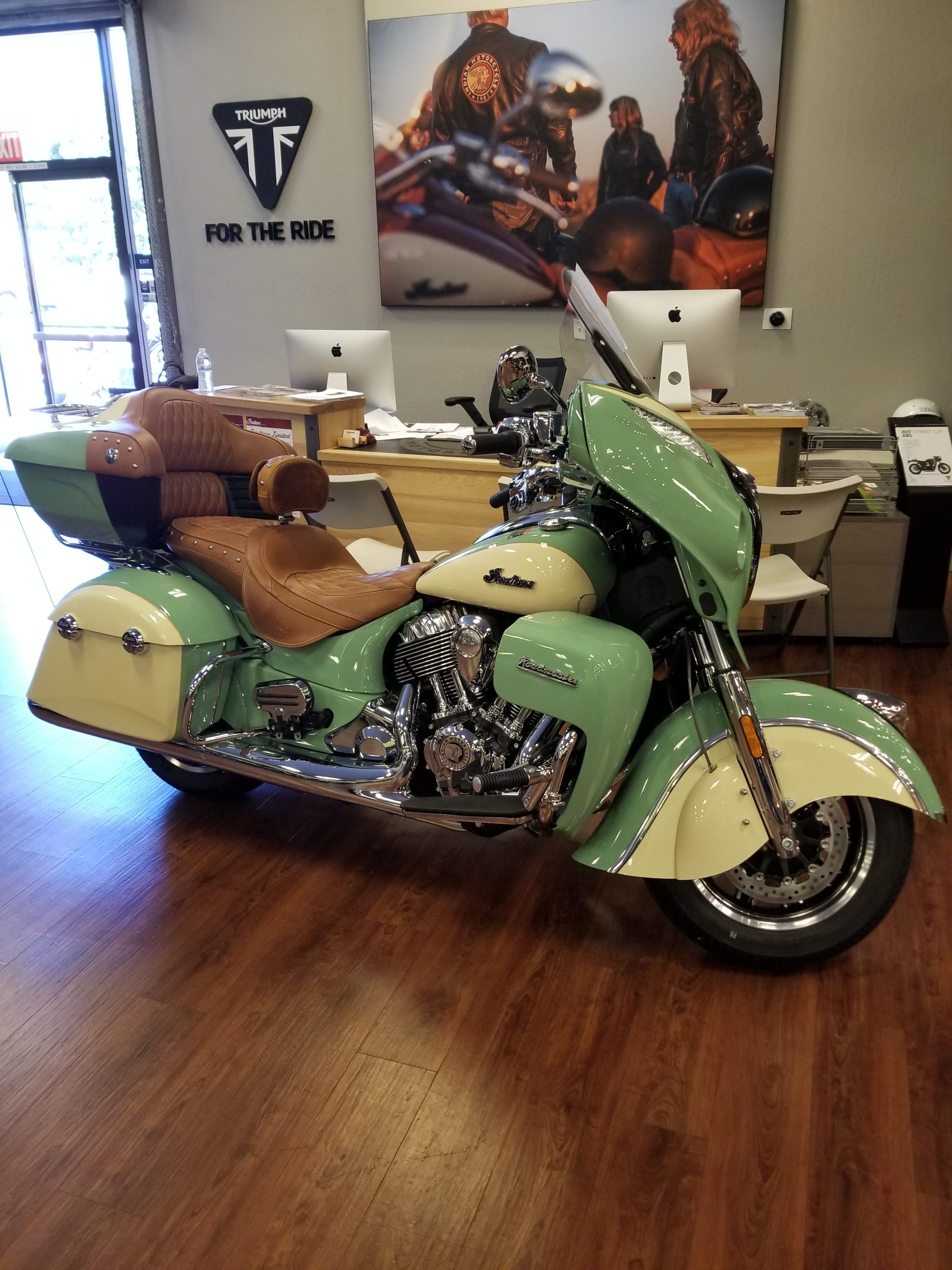
Woodland Hills Motorcycle Accident Lawyer Norman Gregory Fernandez and Christine Devine on Motorcycle at The Rock Store
Yes, a passenger needs to learn how to be a passenger on a motorcycle. I have experienced many instances where passengers on the back of my bike have almost caused me to go down, dangerously distracted me on rides, and have damaged my bike.
Get On and Off the Bike and Foot Placement – The first thing that you need to teach a passenger is how to get on and off the bike, and where they should put their feet. I usually help my female passengers (my fiancé for the past 5 years) to get on and off the bike by lifting their leg over the bike, because I hate it when they kick your tank or chrome and mess up your detail work or scratch your paint.
Do not assume that a passenger knows how to get on and off the bike, or where to place their feet just because they appear to be biker gals or guys, or brag about how many times they have ridden on the back of bikes. I know from first hand experience that many times they have no clue and are just trying to impress you.
Do Not Remove Feet from Pegs – The second thing you need to stress to your passengers before you ride is that they should not remove their feet from the pegs or floorboards under any circumstances until you stop, put your kickstand down, and tell them to get off. My fiancé and I have been riding together for so long now that it is automatic.
On our first date she put her long heeled boots on my new Slash Cut pipes and proceeded to ruin them. The boots melted all over my pipes.
The main reason that the passenger needs to keep their feet on the pegs or floorboards is for safety. Your passenger could suffer serious injuries to their feet if they put their feet down before you park the bike or if they try to get off while you are still rolling. It could actually cause you to drop the bike.
Proper Riding Attire for Passengers – It is your responsibility to ensure that your passenger is wearing the proper motorcycle riding attire and helmet, (discussed above) not only for their safety, but for you as well. If you get into an accident that is your fault, you are legally liable to the passenger for their injuries. If they are not wearing proper attire, you will be legally responsible for their damages.
I know it looks real nice to see gals on the back of Harley Davidson’s or Sports bikes, with little halter tops on, and skinny minnie shorts, however you need to think about what will happen to them in case of an accident. Is it more important to look cool or protect your passenger?
Do the right thing; make sure your backseat passenger has proper riding gear on.
How to be a Motorcycle Passenger – Now that you have taught your passengers the basics, you now need to teach them how to be a passenger on a motorcycle.
There are 3 types of passengers: (1) Naturals– they have no fear and seem to automatically know what to do, (2) Scardie Cats – no matter how many times they ride, they cannot get over the fear of riding on the back of a bike, and (3) Normies – they are afraid at first, but they eventually lose their fear except under certain circumstances.
My fiancé is a normie. She freaks out when I lane split, and no matter what I do, she freaks out when I lane split.
You need to teach your passenger to lean back into your sissy bar or backrest, and relax. There is nothing worse than a passenger who has a death grip on you while you are trying to ride. They may feel safe, but it prevents you from being able to operate the motorcycle safely.
Obviously if you have no backrest or sissy bar, than your passenger should scoot up as close to you as possible and hold on to your waist.
I am against taking a passenger on a motorcycle unless you have a sissy bar or backrest on the bike because of the danger that they will fall off if you accelerate too fast, or they lose their grip and fall off. I have seen it happen to other riders, it is a real danger.
Some are of the opinion that it is safer to not have a backrest or sissy bar on the back so that their passengers can fall off in case of an accident.
This is a matter of personal opinion and a subject of much debate. I recommend not taking a passenger on your bike unless you have a backrest or a sissy bar. It may not look as cool on your bike, but at least your passenger will have some protection from falling off of the back of the motorcycle. I feel that the chances of a passenger falling off of the back of your bike are greater than you getting into an accident.
You will need to explain to your passenger “before the ride,” that you will be accelerating, decelerating, shifting gears, and doing turns. You need to explain that on curves and turns that the bike will lean in whatever direction you are going, and that this is normal.
You need to explain to your passenger to not fight against the lean of the bike, and that they should lean into the turn with you. It is very important for balancing the motorcycle. Explain to them that if they shift their body weight away from the lean that it could not only make your ride much more difficult, it could also cause you to crash.
Another thing you will need to explain to your passenger is not to make sudden moves or shifts of the butt or body weight on the back of the bike, because this too can cause you to go out of control or crash the bike, especially at slow speeds or at stops.
There is nothing worse than holding up a 1000 plus pound bike at a stop light, not including rider and passenger weight, only to have your passenger jerk or shift their butt around. I have seen friends drop their bikes this way.
Rider / Passenger Communications on the Road – Although there are companies that make rider/passenger communications devices with in helmet microphones and speakers to allow you to talk while riding, most motorcycle riders do not have this kind of setup. I have tried this setup myself, but my bike is so loud, especially at highway speeds, it only worked at very slow speeds with low wind noise. It did not work for me and I removed it after our first 800 mile run with the system.
At highway speeds it will be virtually impossible to speak to your passenger and visa versa. Yelling in most cases does not work either and can be dangerous.
I highly recommend that you work out what I call a tapping system for communications. It’s real simple; let’s say your passenger needs to go to the bathroom. Work out a system where she will tap you 2 times in your shoulder. You will then give a thumbs up with your left hand to signal that you understand and will pull over at the next gas station. Let’s say that the passenger needs to stop immediately because they have dropped something, noticed something wrong with the bike, or for any other reason. Work out a system where the passenger will tap you on your shoulder 5 times. You give the thumbs up with your left hand to signal that you understand, and then pull over at the first “safe” place.
You get the idea. Part of the pleasure of riding a motorcycle with a passenger is “not talking” and just taking in the sights, smells, and sounds, in intimate closeness. With a tapping system you can communicate important things without risking turning your head to try to yell at each other through the wind.
Small Children as Passengers – I do not recommend taking small children on your motorcycle as passengers. I have seen other bikers do this on many occasions and I could only think to myself; what if that idiot crashes? What is even more upsetting is seeing somebody taking their small child for a ride with no leathers or boots.
What is the age at which I would recommend taking a child or a teen on a ride? I started taking my daughter out when she was 16 wearing full motorcycle attire.
I will not make any recommendations with regard to this issue, except to say that if a child cannot reach the back pegs or put their arms completely around you, than I doubt that they are big enough to ride as a passenger.
By Norman Gregory Fernandez, Esq. , Copyright, 2006




 Welcome, my name is
Welcome, my name is 








Great stuff – many thanks for taking the time to do this for us all. The information
is excellent and your articles very well put together.
I am getting back into riding after 25 years of raising a family and it is great!
What’s even better is my son just bought his first bike so now I have a live in riding
buddy. Sharing this info with him will help his mom sleep at night.
All the best.
G
Hi — Thank you so much for this article. You have a great blog here!
From one passenger to other potential passengers, I wish someone told me this stuff before my first ride:
Watch the road! It’s tempting to relax and enjoy the ride, especially since you can’t see the road with the driver’s head blocking 80% of your view — but you still need to be aware of what situations the driver will be reacting to.
Whenever the driver unexpectedly slams on the breaks, your momentum will push you into his back. Depending on how the seat is set up on the bike and how you typically sit, your face can literally slam into the back of his helmet. That hurts … So if you stay alert with the road & traffic situation, you can brace yourself for sudden brakes and avoid slamming into the driver.
Anytime the bike hits a bump in the road, remember that you’re sitting over the rear wheel. If you don’t brace yourself for the bump, you will be launched several inches into the air. At high speeds, the bike will slip out from under you. Don’t count on a backrest to catch you — I was almost launched over one. Pay attention to the road and brace yourself.
Before getting on the bike, ask the driver what you can and can’t hold onto in an emergency. For example, on most Harley’s there is a “grab strap” across the seat that looks tempting for the passenger to hold onto. But those can snap easily, and your driver may have better suggestion for you.
Remember that passengers were an afterthought in the design of most motorcycles, so don’t expect to be comfortable. If there is a passenger seat, it may be the size of a business card. The foot pegs may be located centimeters away from melting hot pipes (think of the Softail Deuce — they put the right passenger foot peg UNDER a pipe, guaranteeing a pipe burn …). And even if there is a windshield on the bike, expect to be blasted mercilessly anyway — those were designed for the driver.
But riding as a passenger can still be lots of fun. I love it. Really, I do 🙂
(But I probably won’t love it anymore when I get my own bike!)
Thanks again for the article and tips — it’s all a great help!
Happy Riding 🙂
Thanks for the kind words Glenn.
Keep both wheels on the road.
Norm
Thanks for your comments Allison. I cannot tell you how many times I have been head butted by a passenger or pushed up onto the tank after a sudden stop 🙂
Let’s Ride!
Norm
thank you for you tips and advices. I have learned a great deal from reading your article. I am currently in the process of purchasing a bike. again thank you